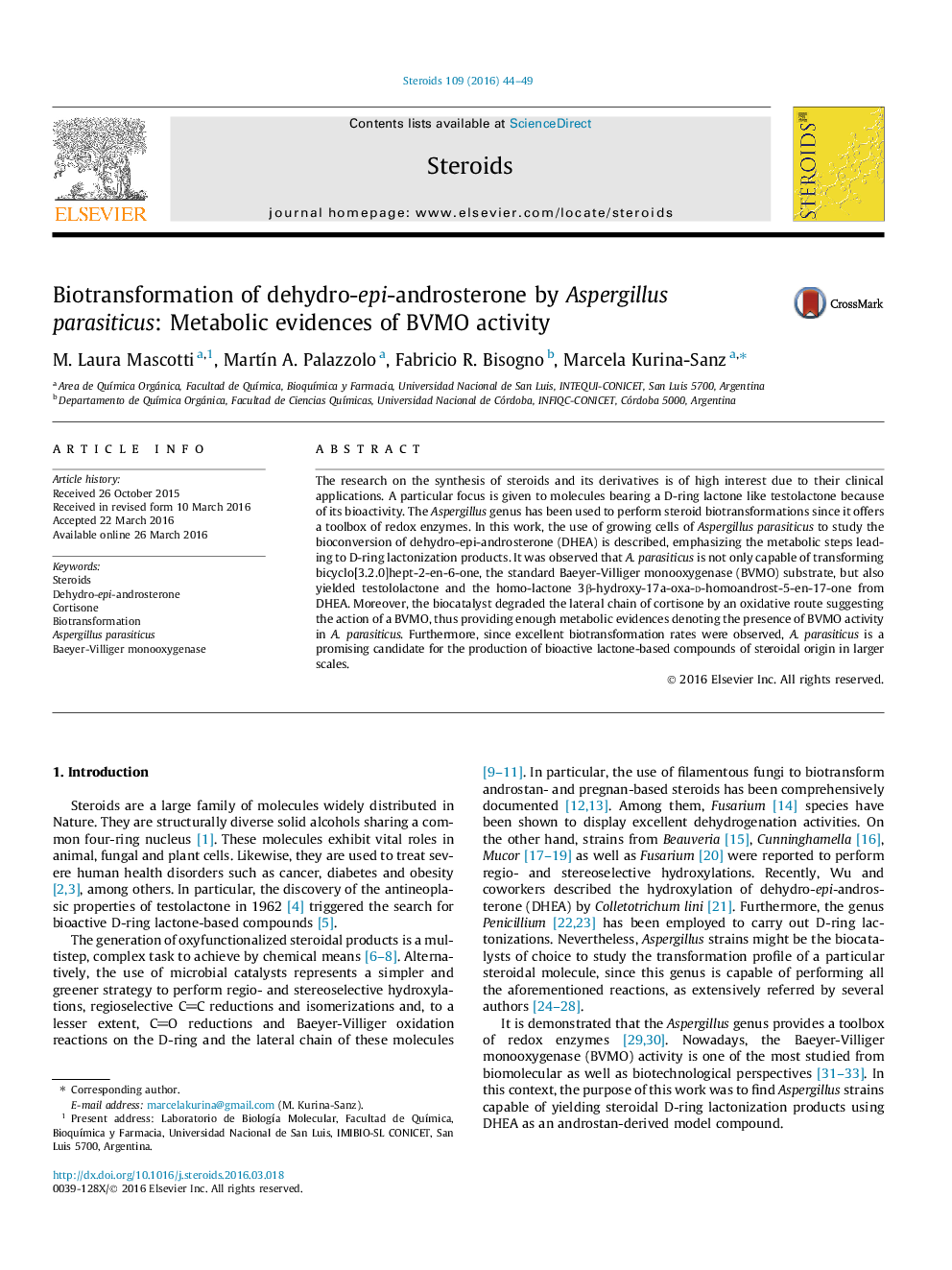| Article ID | Journal | Published Year | Pages | File Type |
|---|---|---|---|---|
| 2029120 | Steroids | 2016 | 6 Pages |
•A. parasiticus oxidized the standard BVMO substrate, bicyclo[3.2.0]hept-2-en-6-one.•DHEA biotransformation outcome varied with O2 availability.•A. parasiticus converted cortisone to adrenosterone through an oxidative route.•Gathered evidences denote the occurrence of BVMO activity in A. parasiticus.•A. parasiticus is a candidate to prepare lactone-based steroidal bioactive compounds.
The research on the synthesis of steroids and its derivatives is of high interest due to their clinical applications. A particular focus is given to molecules bearing a D-ring lactone like testolactone because of its bioactivity. The Aspergillus genus has been used to perform steroid biotransformations since it offers a toolbox of redox enzymes. In this work, the use of growing cells of Aspergillus parasiticus to study the bioconversion of dehydro-epi-androsterone (DHEA) is described, emphasizing the metabolic steps leading to D-ring lactonization products. It was observed that A. parasiticus is not only capable of transforming bicyclo[3.2.0]hept-2-en-6-one, the standard Baeyer-Villiger monooxygenase (BVMO) substrate, but also yielded testololactone and the homo-lactone 3β-hydroxy-17a-oxa-d-homoandrost-5-en-17-one from DHEA. Moreover, the biocatalyst degraded the lateral chain of cortisone by an oxidative route suggesting the action of a BVMO, thus providing enough metabolic evidences denoting the presence of BVMO activity in A. parasiticus. Furthermore, since excellent biotransformation rates were observed, A. parasiticus is a promising candidate for the production of bioactive lactone-based compounds of steroidal origin in larger scales.
Graphical abstractFigure optionsDownload full-size imageDownload as PowerPoint slide
